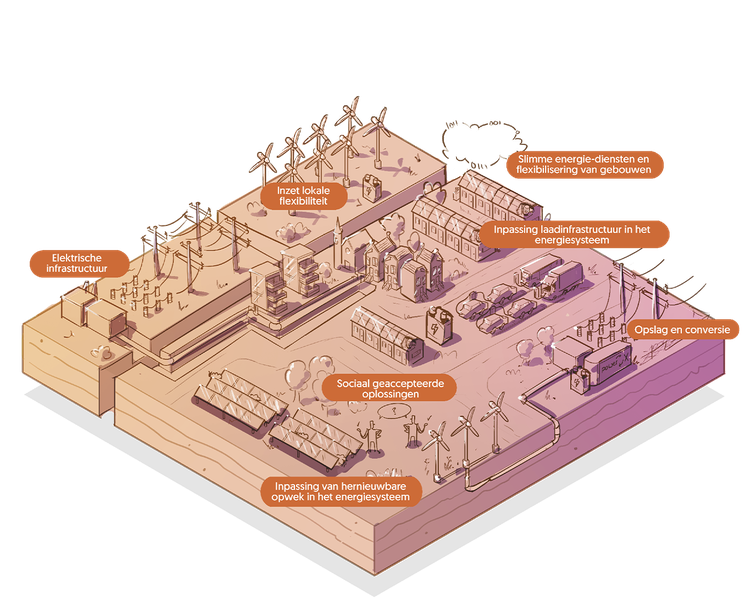By implementing sustainable traffic and transportation systems, improving vehicle efficiency, and utilizing renewable fuels and electric propulsion whenever possible, the direct CO2 emissions from personal mobility and freight transport will be reduced to nearly zero by 2050. The energy sources employed will be 100% sustainably produced.
Two of the Meerjarige Missiegedreven Innovatieprogramma’s (MMIP’s) are about subjects surrounding mobility:
- MMIP 9: Innovatieve aandrijving en gebruik van duurzame energiedragers voor mobiliteit (pdf)
- MMIP 10: Doelmatige vervoersbewegingen voor mensen en goederen (pdf)
Furthermore, developments in other sectors also have an impact on the challenges in mobility, such as the built environment, sustainable electricity generation, and logistics related to agriculture, food, recycled materials, and goods.
Meer weten?
Mobility
-
To reduce the CO2 emissions from mobility, the demand needs to be influenced, the system made more efficient, and a transition to energy-efficient vehicles needs to be made. This MMIP addresses these goals through five sub-topics:
- Developing, demonstrating, and implementing (technology for) Zero Emission vehicles in various modes of transportation.
- Developing, demonstrating, and applying infrastructure and services for electric vehicle charging.
- Developing, demonstrating, and applying infrastructure and services for hydrogen refueling and/or hydrogen carriers.
- Developing, demonstrating, and applying technologies for distribution and application of advanced (synthetic or non-synthetic) biofuels and Power-to-X fuels (electrofuels).
- Developing and applying fuel-efficient and clean combustion engines for various modes of transportation, as well as technology for reducing the energy consumption of vehicles on road, water, and air.
